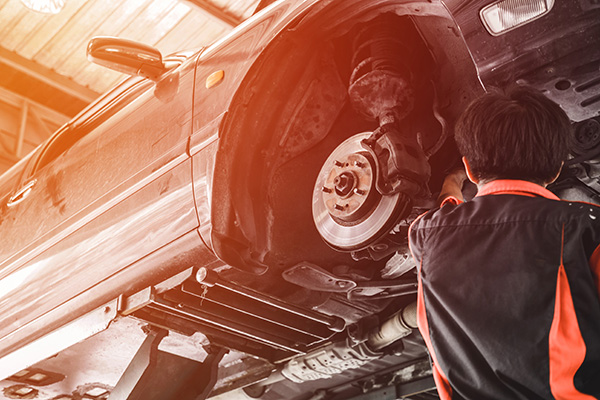
If you’re a Jeep owner, especially one who enjoys off-roading or highway driving, you may have heard of the dreaded “death wobble.” It’s an issue that has gained a bit of notoriety among the Jeep community—and for good reason. The death wobble is more than just a simple vibration or minor shake. It's a violent, uncontrollable oscillation of the front wheels and steering wheel that can make your vehicle feel almost impossible to control at high speeds.
Despite the dramatic nickname, death wobble doesn’t necessarily mean your Jeep is about to fall apart. However, it does indicate that something is seriously wrong with your suspension or steering components and should not be ignored. Let’s take a closer look at what causes the death wobble, how to diagnose it, and how to resolve it so you can get back to driving with confidence.
What Exactly Is the Death Wobble
The death wobble occurs when your Jeep hits a bump, pothole, or other road irregularity, and the front suspension responds with extreme side-to-side shaking. This is a forceful vibration that can make it feel like your steering wheel is being yanked from your hands. Most drivers experiencing it for the first time think a major mechanical failure has just occurred.
Typically, the wobble only stops when you reduce your speed significantly or come to a full stop. It’s most common in Jeep Wrangler models with solid front axles, especially those that have been lifted or modified with aftermarket suspension parts. But it can also affect other Jeep models or any vehicle with a similar suspension setup.
Common Causes of Death Wobble
There is rarely a single cause for the death wobble. Instead, it usually results from a combination of worn, loose, or improperly installed parts in the front suspension or steering systems. Some of the most frequent culprits include:
- Loose or worn track bar bushings or bolts
- Failing ball joints
- Worn-out tie rod ends
- Unbalanced or misaligned tires
- A damaged or loose steering stabilizer
- Incorrect caster angle following a lift kit installation
Even a minor issue, like slightly underinflated tires or a poorly torqued bolt, can contribute to the wobble when combined with other worn parts. The solid axle design of many Jeeps means the front suspension moves as a single unit, so any instability or looseness in one part can affect the whole system.
Diagnosing the Problem
When trying to pinpoint the cause of a death wobble, it’s crucial to inspect your vehicle thoroughly. Start with a visual and physical inspection of the front suspension. Look for signs of wear, such as torn rubber bushings, leaking shocks, or rust around mounting points.
With the vehicle safely lifted and supported, check for play in the track bar by having someone move the steering wheel back and forth while you observe the bar and its mounts. If there is movement at the mounting points, the bushings or bolts may be worn out or not properly tightened.
You should also inspect the ball joints and tie rod ends for excessive play. If these components move easily or feel loose when manipulated by hand, they may need replacement. Unbalanced tires or wheels out of alignment can also trigger the wobble, so be sure to check your tire pressure and have the alignment tested.
How to Fix It
Fixing the death wobble isn’t about replacing one single part, it’s about ensuring every component in your front end is working together properly. Begin by replacing any obviously worn or damaged components. In many cases, simply tightening bolts or refreshing bushings can make a big difference.
If your Jeep has a lift kit, double-check that it was installed correctly. The caster angle and pinion angle may need adjustment to prevent instability at higher speeds. A wheel alignment should always follow any suspension work.
Although the steering stabilizer is not usually the root cause of death wobble, it can help dampen vibrations and provide smoother steering. Replacing or upgrading this part is often done in conjunction with other repairs to enhance overall performance.
Once all necessary parts have been addressed, test drive the vehicle to verify that the wobble has been eliminated. Be cautious and try to replicate the previous conditions that triggered the issue, such as driving at highway speeds or hitting a mild bump. If the wobble persists, a deeper inspection may be needed.
Prevention Tips for Jeep Owners
To avoid the death wobble in the future, regular maintenance is key. Even if you’re not currently experiencing problems, it’s wise to:
- Check all suspension bolts for proper torque every few months
- Inspect bushings and ball joints for early signs of wear
- Rotate and balance your tires regularly
- Avoid over-tightening aftermarket components
- Have your alignment checked annually or after any off-road trip
If your Jeep has been lifted, make sure the new components are compatible with the original steering geometry and drivetrain angles. The more you modify your vehicle, the more important it becomes to maintain the balance between flexibility and stability.
Get Back on the Road with Confidence at Jeepguys in Greensboro, NC
At Jeepguys in Greensboro, NC, we specialize in all things Jeep, from factory maintenance to advanced off-road upgrades. If your vehicle is experiencing a death wobble or showing early signs of suspension trouble, bring it in for a full inspection. We’ll identify the root cause and make the repairs needed to restore your driving confidence.
Don’t let suspension problems ruin your Jeep experience—schedule your appointment with Jeepguys today and keep your ride safe and smooth.